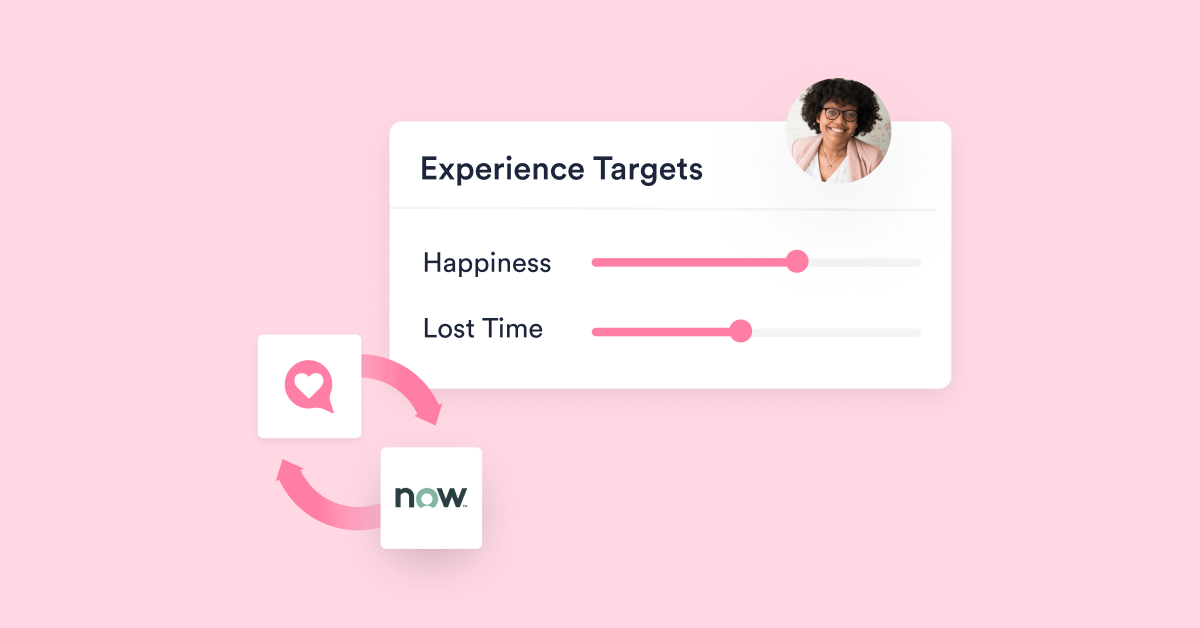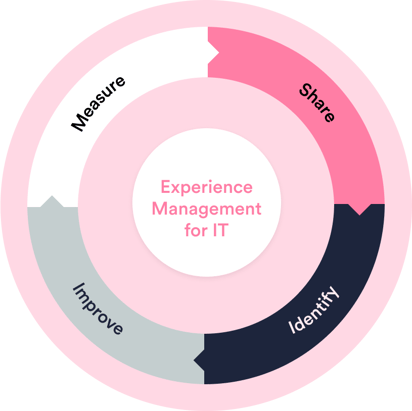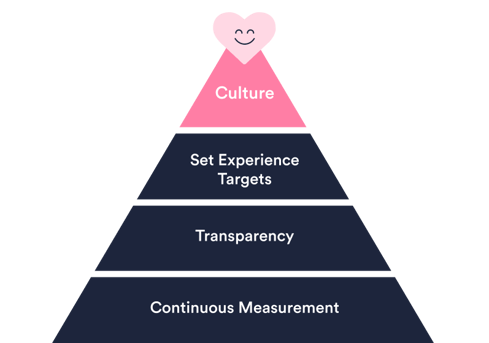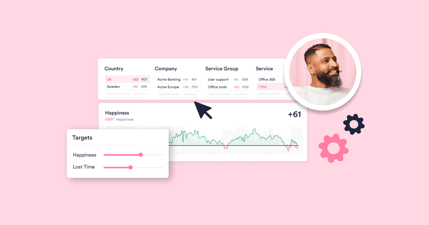How to Set Up XLAs in ServiceNow
Compared to traditional service level agreement (SLA) targets, experience level agreement (XLA) targets focus more on what matters most to end-users – the desired outcomes and improved value from services.
In this blog, find out why XLAs help deliver better business outcomes than SLAs, and learn about a four-stage approach to setting up XLAs in ServiceNow.

If your service provider organization is currently looking at using experience level agreement (XLA) targets to better understand and improve upon the quality of its IT service delivery and support (or that of other lines of business using ServiceNow for enterprise service management), then this blog will help.
In it, I explain how XLAs differ from traditional service level agreement (SLA) targets. I also explains why XLAs are better suited to modern business needs, including those of employees, and how experience management can improve both service provider operations and business outcomes.
Let’s start with the difference between XLAs and SLAs as the foundation for setting up XLAs in ServiceNow…
XLAs versus SLAs
We often love three-letter acronyms (3LAs) in business, with XLA another one to add to your list. As to what XLAs are, they’re a necessary evolution of the traditional SLAs used by service providers. Importantly, though, this is so much more than a fashion-based name change – with the replacement of “service” with “experience” (in the name) reflecting the need for service providers to also focus on demand-side performance metrics rather than solely those related to the supply side. If it helps, you can think of demand-side performance metrics as what matters most to customers/end-users rather than what matters most to the service provider.
Another important difference is that XLAs focus on the outcomes and value of any given service. Such that they measure what has been achieved rather than simply what has been done – so the focus is on the outcomes, not the outputs.
Don’t let the “versus” in the above subheading fool you. With XLAs and SLAs, it doesn’t need to be an either/or situation, and your organization can operate both in tandem. However, and importantly, an SLA target will rarely be able to deliver what an XLA target can in terms of understanding and improving your outcomes, especially in customer or end-user terms. This is because… well, I’ll let the next section tell you.
Why XLAs offer more than SLAs
Take a moment to think about many of your current key performance metrics. If you’re an IT service provider (and similar examples can be used for other lines of business), does anyone not in IT care how many incidents the IT service desk handled in Q3? Or does an employee still struggling to get help with their IT issue care that the service desk has a rolling customer satisfaction (CSAT) score of 95%? Especially when they’re being bounced from one IT team to another with no one able to quickly help with their issue.
While these might seem frivolous examples, hopefully, they’re a good starting point for questioning whether your current SLAs are fit for purpose. Importantly, there are various perspectives to consider here. For example, do the SLAs allow your service provider organization to ensure that:
- Services are delivering on their promises in the eyes of customers/end-users. Or are there potentially “watermelon SLA” scenarios where, while performance metrics are consistently green, the service receivers are unhappy with the services they receive?
- Customers and end-users are receiving the services and support they need? Or are the services and support capabilities they receive adversely affecting their ability to deliver the outcomes and value expected of them?
- Issues are highlighted, root causes are identified, and improvement opportunities are visible across service provider operations, services, experiences, and outcomes. Or are these improvement opportunities hidden by the use of SLAs and the limitations of the service-provider focus?
The bottom line here is whether you’re totally confident that your current portfolio of performance metrics – including CSAT – is a true reflection of your service-provider organization’s relative level of success.
Or do you need to introduce XLAs to better measure and improve your operations, services, experiences, and outcomes based on the customer/end-user perspective? Leveraging both experience management and the ServiceNow NOW Platform and data to better understand what customers and end-users receive in terms of service and support.
Start with knowing how you want to benefit from XLAs and experience measurement
On the one hand, you might not know what the measurement of experiences will uncover, and this is usual (and one of the key reasons why the approach is needed – that issues are often hidden in traditional metrics). On the other hand, there are a number of commonly seen benefits that can be used to drive your experience management actions. For example, gaining greater insight into end-user happiness and productivity (as part of the end-user experience) such that it can then be improved to not only meet end-user expectations but also to improve operations and outcomes.
The context is important, too. For example, using the better insight to better manage outsourced partners and to drive improvements in the right places. After all, how often do the metrics used in outsourced IT arrangements show that all contracted targets are being met, but end-users aren’t happy with the IT services and support they receive? What’s usually missing here is the focus on what’s most important to the service receivers.
How to set up XLAs in ServiceNow
We recommend the adoption of a four-stage approach to XLAs and experience management:
- Measurement – this is the collection of experience data which, when combined with the operational data in ServiceNow, will create meaningful insights. This can relate to experiences in different business areas, such as IT or Human Resources (HR), or how remote working impacts employees.
- Sharing – an important part of experience management is sharing the measurement data with stakeholders. It helps to create transparency and trust as well as open up issues to all rather than just one person owning the data. It’s also great for working closer with partners and vendors and motivating them.
- Identification – with the constant flow of experience data, there’s now real-time insight into the experience end-users are receiving and the areas needing improvement. From this data, XLAs that fit your organization’s exact needs can be set.
- Improvement – after issue identification, deeper analysis of the experience data helps find ways to improve the experience.
As shown in the image below, this is a cyclical approach. End-users will continue to have experiences that vary and change over time; therefore, measurement is still needed to ensure that XLAs are met. Including ensuring that any improvements and other changes don’t adversely affect employee happiness and productivity.

How to measure experience in ServiceNow
End-user perceptions of IT have traditionally been measured via annual surveys or asking questions about “every nth ticket” handled by the service desk. There are many issues with this approach – for example, with yearly surveys, there’s the speed of feedback and that responses are sought from all employees even though they might not have used the service in question.
A better way to measure experience is to have focused audiences with feedback sought daily. This delivers a continuous stream of responses, and the employee effect of changes to service and support can be seen instantly. Importantly, this isn’t only the impact of experience-related improvements but also any other changes that affect ways of working. For example, for a phased ERP system rollout to one location at a time, the data-based insights and learnings can be used to improve the experience after each rollout.
However, there’s more to consider than the “mechanics” of XLAs and experience measurement. This starts with knowing that the point of experience measurement is not to show success but to understand where your service-provider organization currently is and how it can improve. It then requires a change in mindset and culture.
Creating an experience management culture
The Experience Management pyramid below – which mirrors the design of Maslow’s Hierarchy of Needs – shows that, to create an experience management culture, service-provider organizations must go through each level to be successful. The first level of the pyramid is continuous measurement, which was covered earlier. This provides the realistic data that experience management is built upon. Then, each subsequent stage helps to change the thinking, actions, and eventually the culture of the organization.

The HappySignals integration app is available in the ServiceNow Store
The HappySignals ITXM Platform continuously measures your organization’s ServiceNow-run services so you can see where your end-users/employees experience the most pain and lost productivity. Such that you’re then able to focus your improvement efforts on the right services and areas. This can be both the IT Service Experience for incidents and requests or the Enterprise Service Management Experience for other lines of business such as HR and Finance.
Pre-defined surveys mean you don’t need to spend time with survey designer tools. Instead, that time can be spent on actually improving the services and the associated experiences. Importantly, using consumer-focused best practices means very high response rates are achieved, up to 24-45%, and these high volumes provide credible and valuable data for decision-making.
Finally, comparing your service-provider organization’s performance with the HappySignals Benchmarks data offers even greater insight because you can understand how it compares to other, similar organizations.
Want to learn more about how HappySignals brings XLA thinking and experience management to your ServiceNow implementation, without the need for customization or development? Here’s more about our solutions for ServiceNow.
Related content

21.09.2023
Should you get rid of Service Level Agreements (SLAs)?
For years, I’ve been advocating for service level agreement targets, or SLAs for short, to be removed. I believe that ...
Read more >
24.10.2024
What IT Service Quality Means in 2025 and Beyond
How does your IT organization assess IT service quality? If it’s like most IT organizations, it likely has service ...
Read more >
